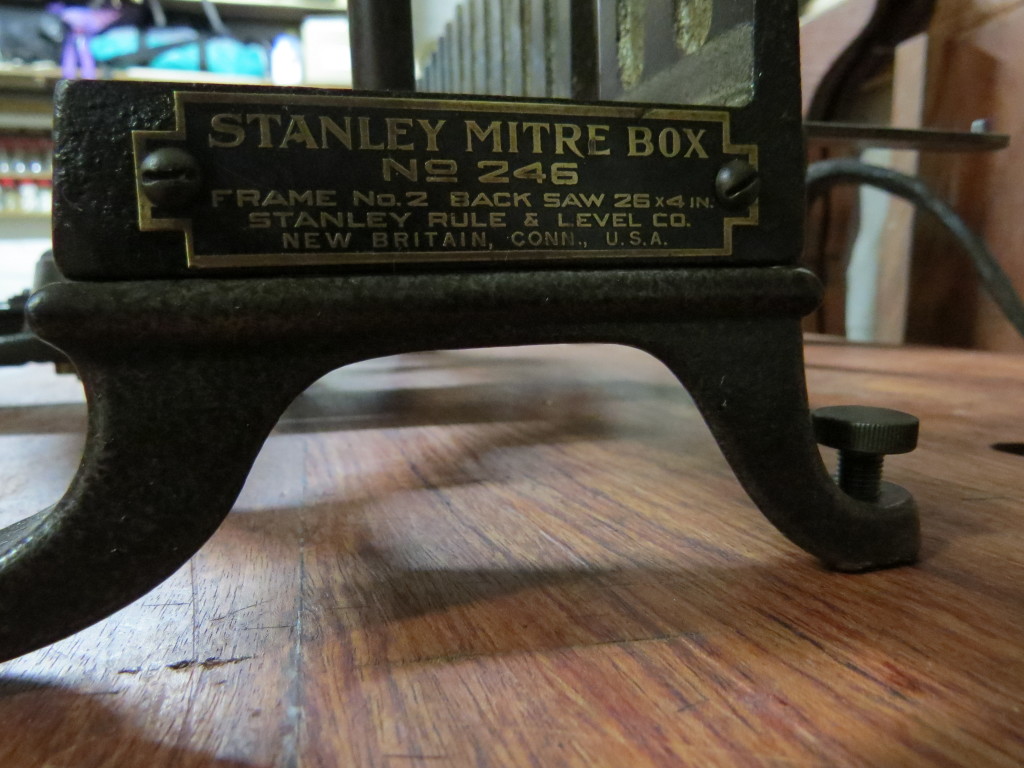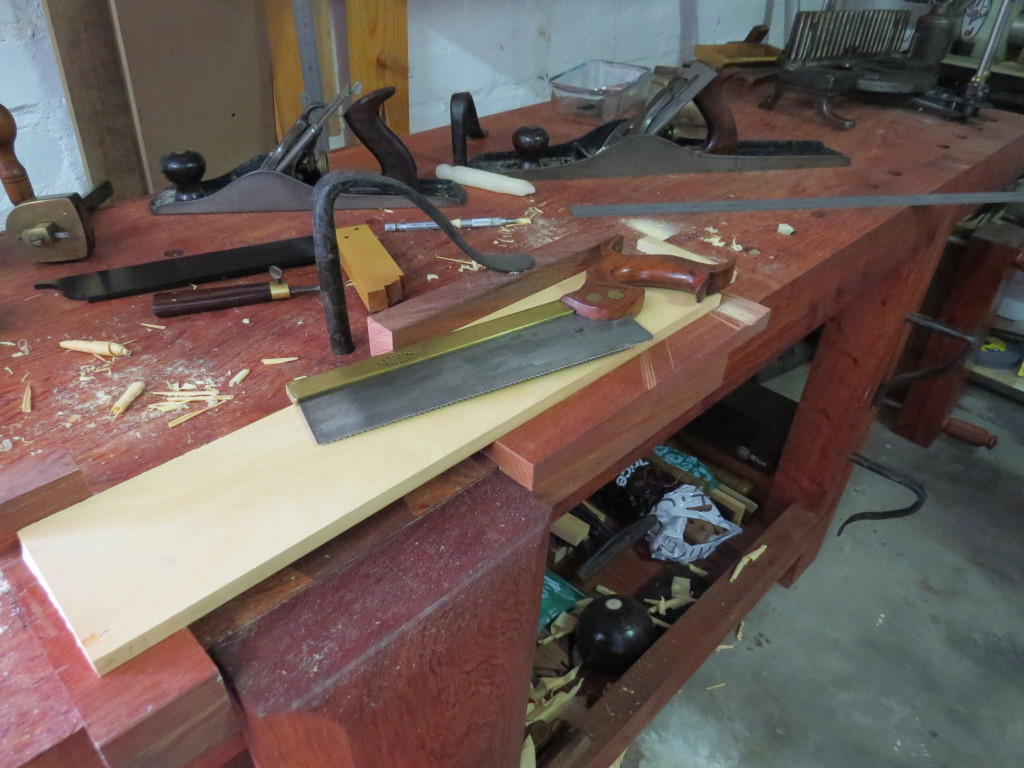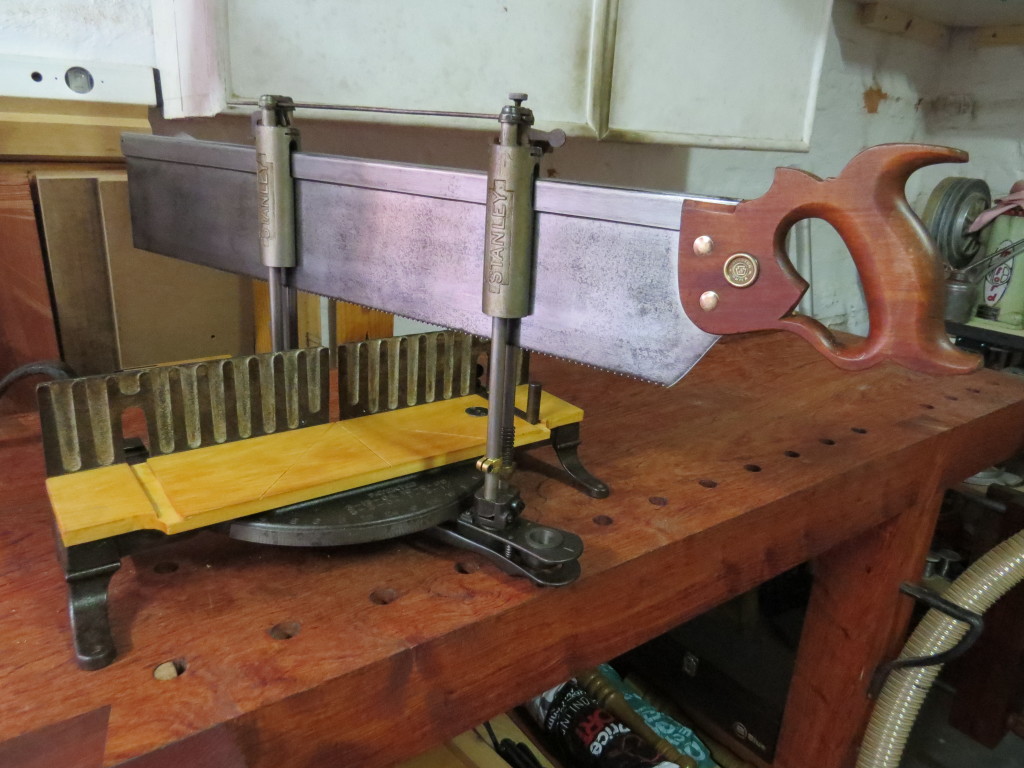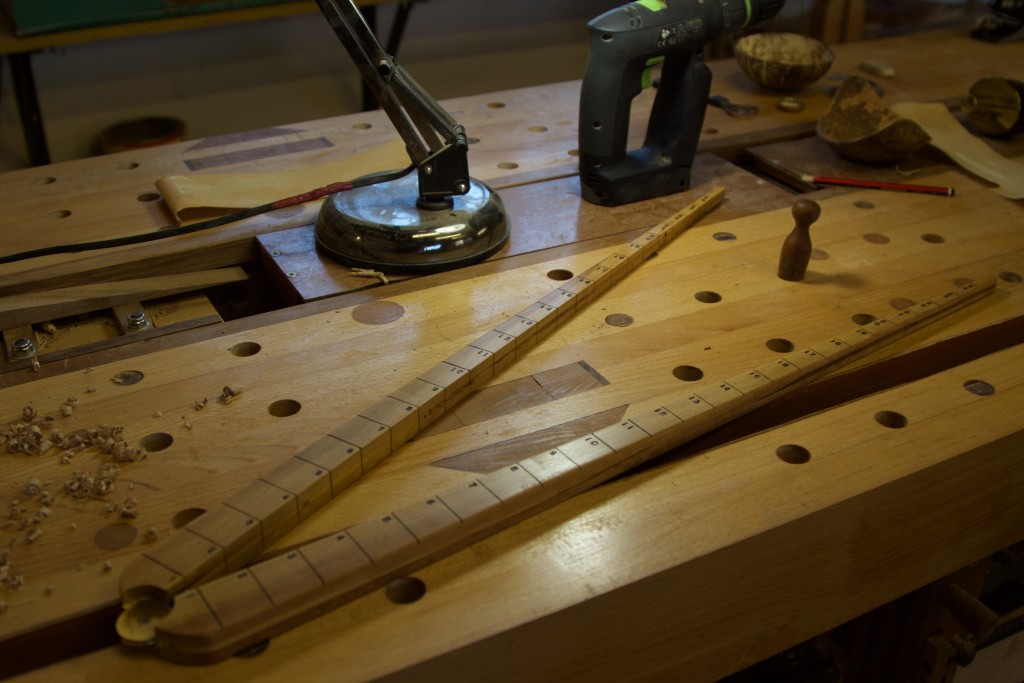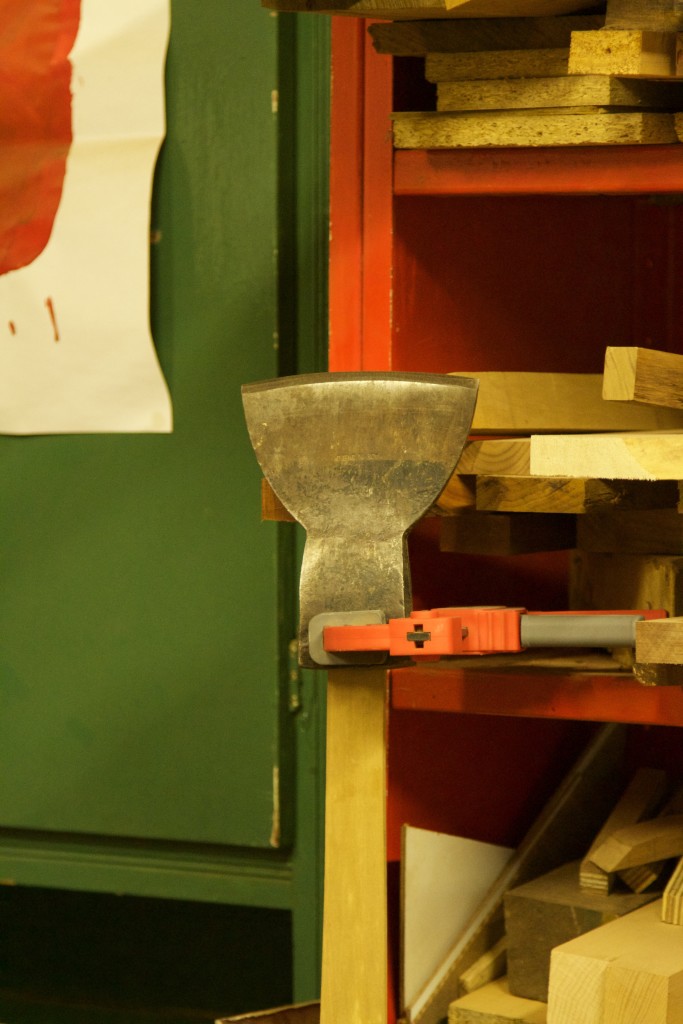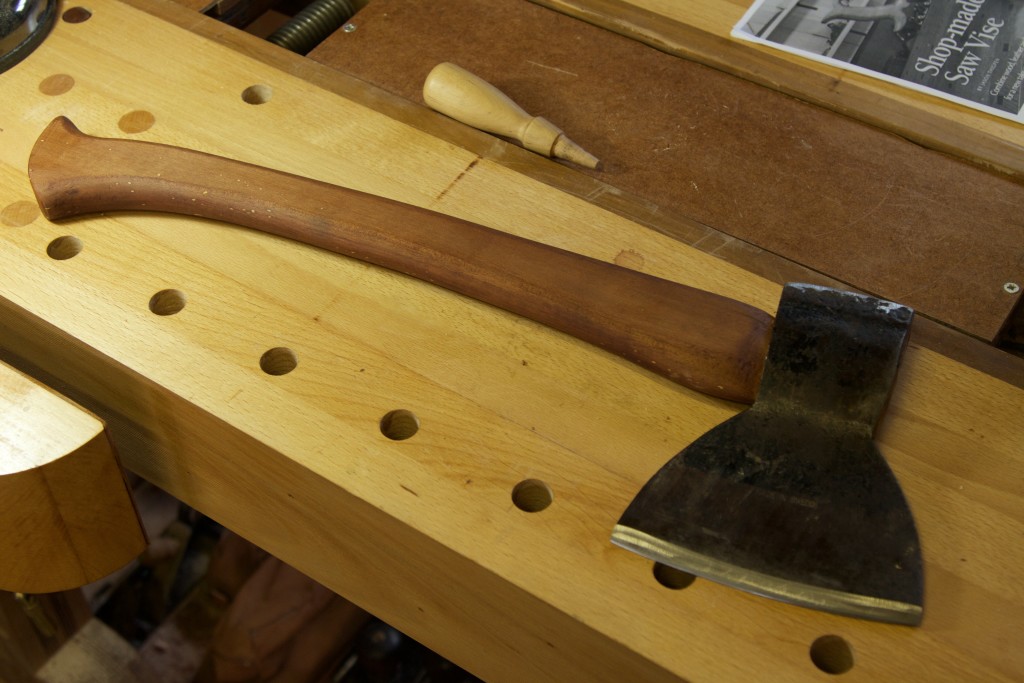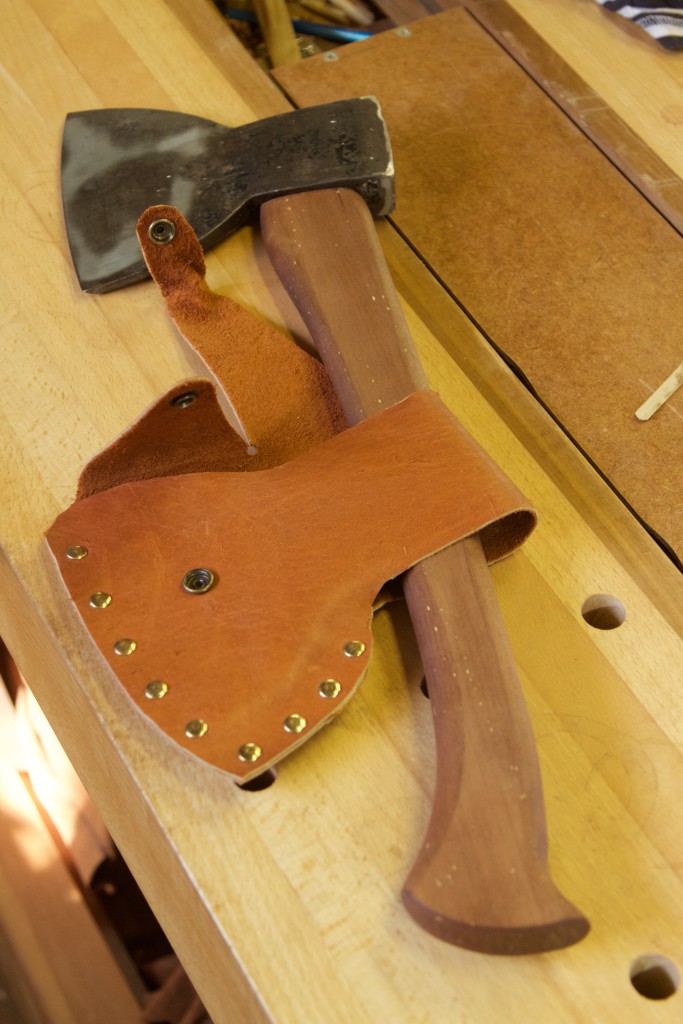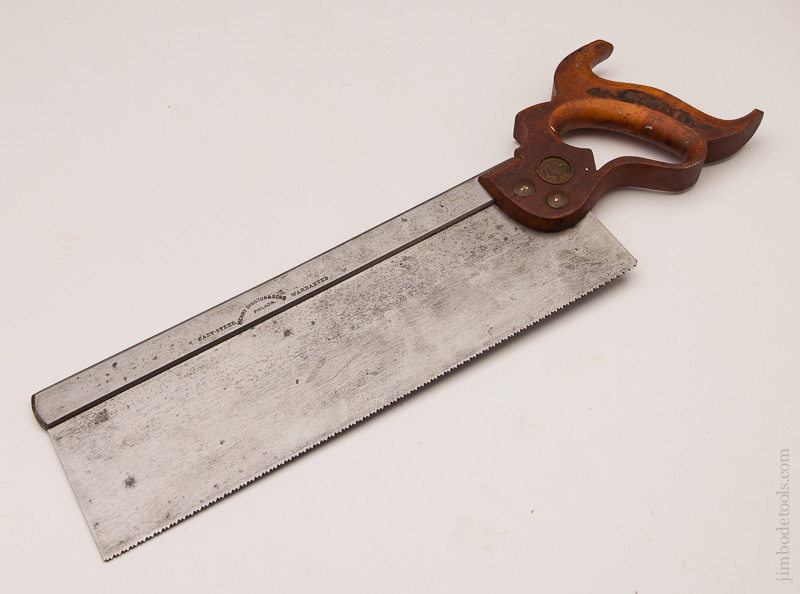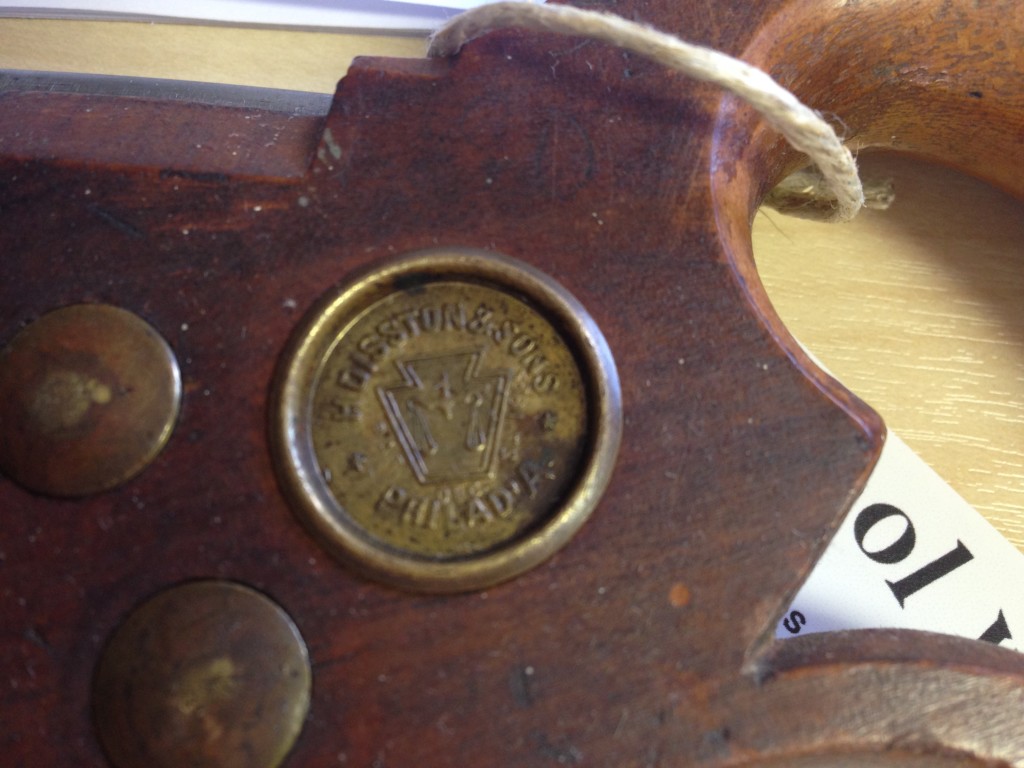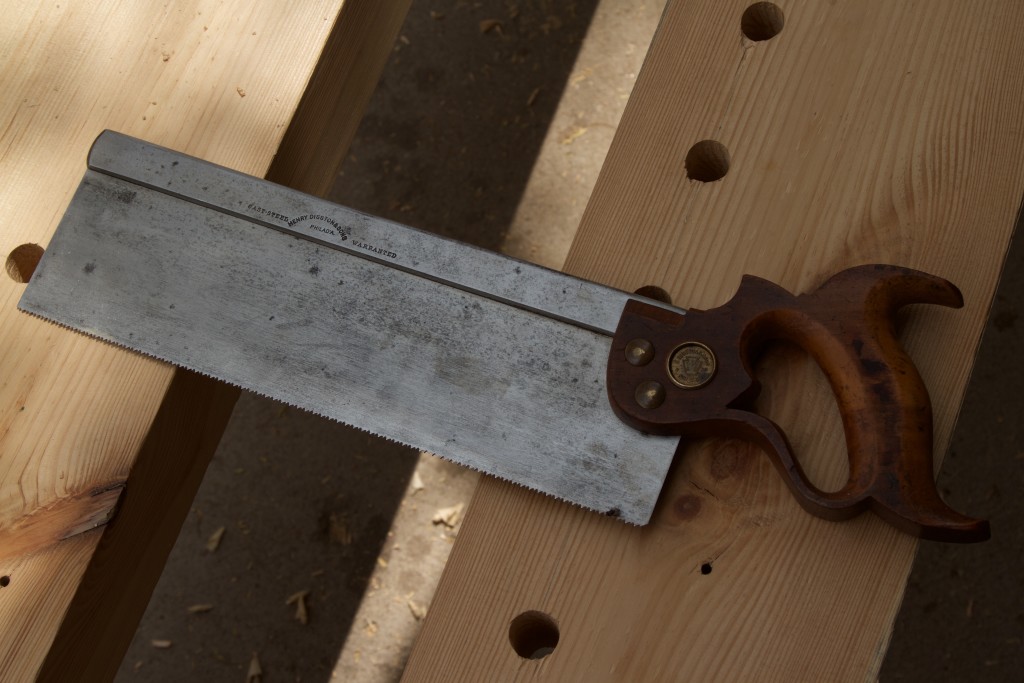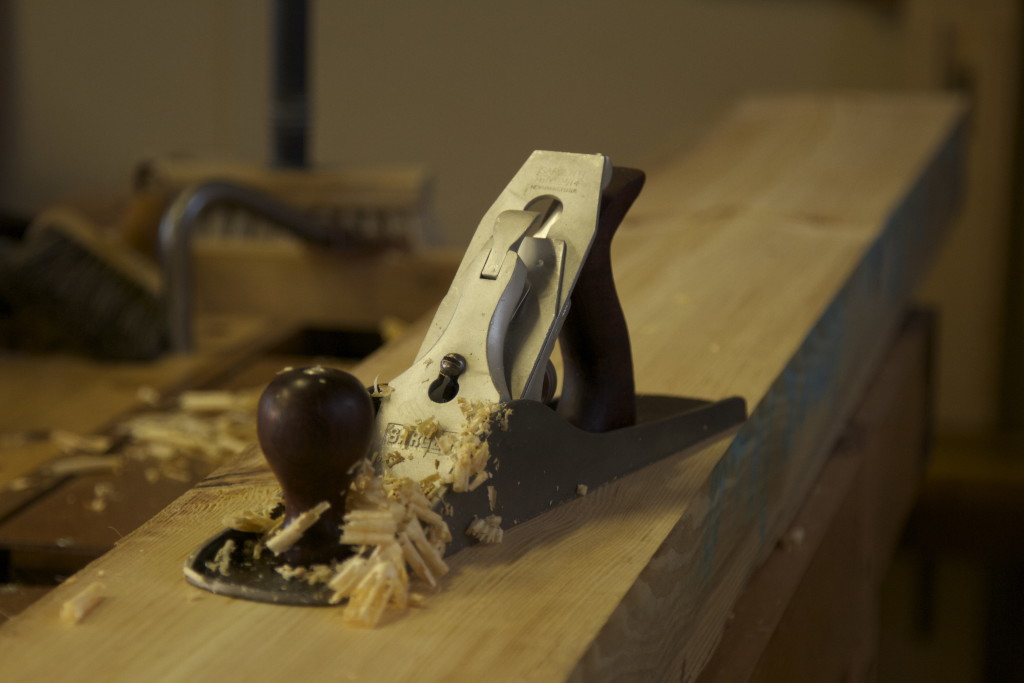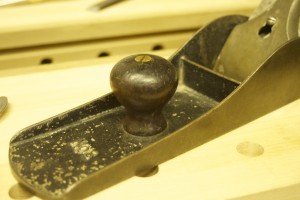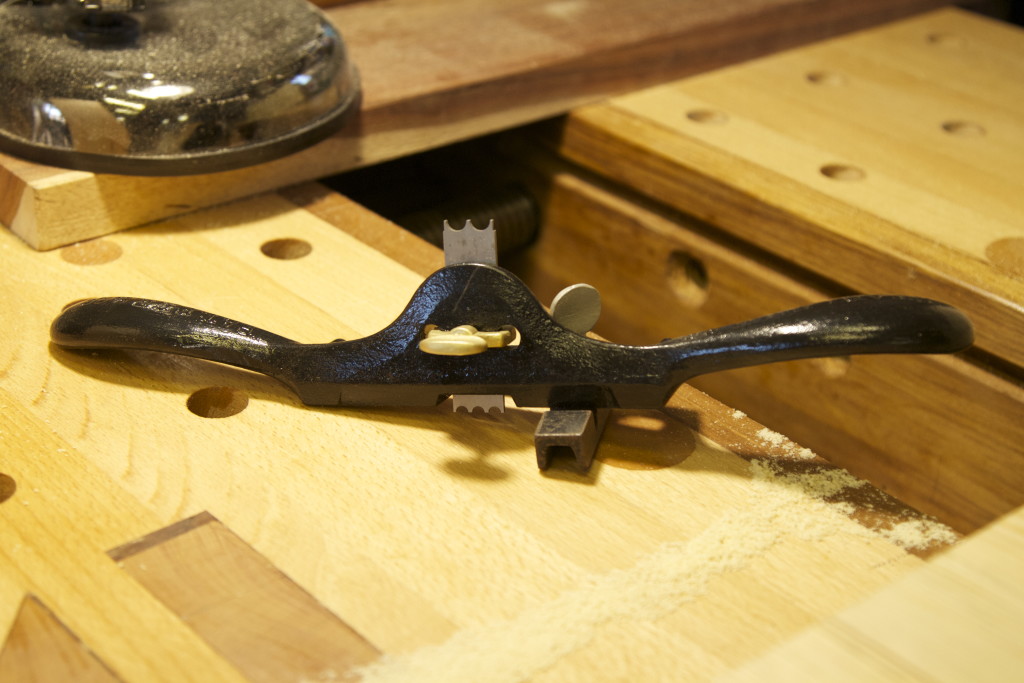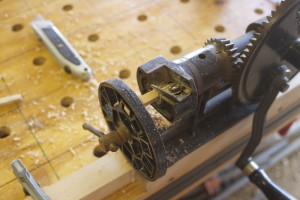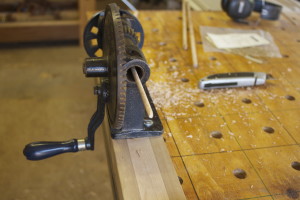25/5/2017
One day in May while sitting in my shop at the end of a long day sipping usquebaugh I found myself staring at this so-called Shaw’s Patent no. 5 Jack plane of mine. It is the Jack plane that I use for heavy stock removal, which means it ends up on the receiving end of some significant elbow grease. As a result, the plane tends to reciprocate the well intended elbow grease with fervent vesication of that part of my hand that flirts with the ribbed edge of the main casting. It got me thinking that the plane could possibly be modified to amend this particular quirk.
You can read a post on how I restored it when I initially got my discombobulated mitts on it.
As you can see here, the slight design glitch with this Sargent plane is twofold. There is a lot of wasted space between the top of the tote and the lateral adjuster. Also the bottom end of the tote slopes downwards, which has the effect that the side of one’s hand tends to end up on the rib of the main casting. Thus a combinations of these two inadequacies coerce the hand of the user into a position much lower than what is needed.
As you can see in the example below, the bottom part of the tote on this Lie-Nielsen low angle Jack plane does not slope down, but runs parallel to the sole of the plane. This design element stops the hand from sliding down too far. I thought that the Shaw’s Patent could benefit from a tote that employs the same strategy. Together with that I could utilize the dead space between the top of the tote and the lateral adjuster by lengthening the tote, which would also aid the user’s hand to ride higher.
I found a piece of Kaapse Swarthout, that would not suffice for any other purpose. This is by far my favourite indigenous species for producing totes.
It was quite a mission to fashion a tote that would fit the plane and at the same time tick the desired design tweaks. I used a combination of the original tote, the Lie-Nielsen tote, and documents on Stanley totes to accomplish the task.
The final product looks like this. You can see how the top of the tote is now much closer to the lateral lever and the bottom of it has a parallel section to hold the user’s hand up. Another neat little trick I discovered is to cut a leather washer to sit between the sole of the tote and the main casting. It makes a huge difference to the feel of the plane when using it. The difference is hard to explain, but try it and you will know what I mean.
The changes to the tote also necessitated a tweak to the length of the tote bolt. Unfortunately it is a change in the more challenging direction i.e. making it longer.
While I was at it I also changed the knob. I prefer a flat section at the top of the knob for my thumb when gripping the front end of the plane with the rest of my fingers on the sole acting as a fence.
The final adjustment I made was to file down the part of the rib in question by about 1 mm and rounded it. After all that the Shaw’s (re)Patent works like a dream. If you prefer woodworking rather than tool tweaking, I suggest that it might be better to buy a Lie-Nielsen plane from the start.























